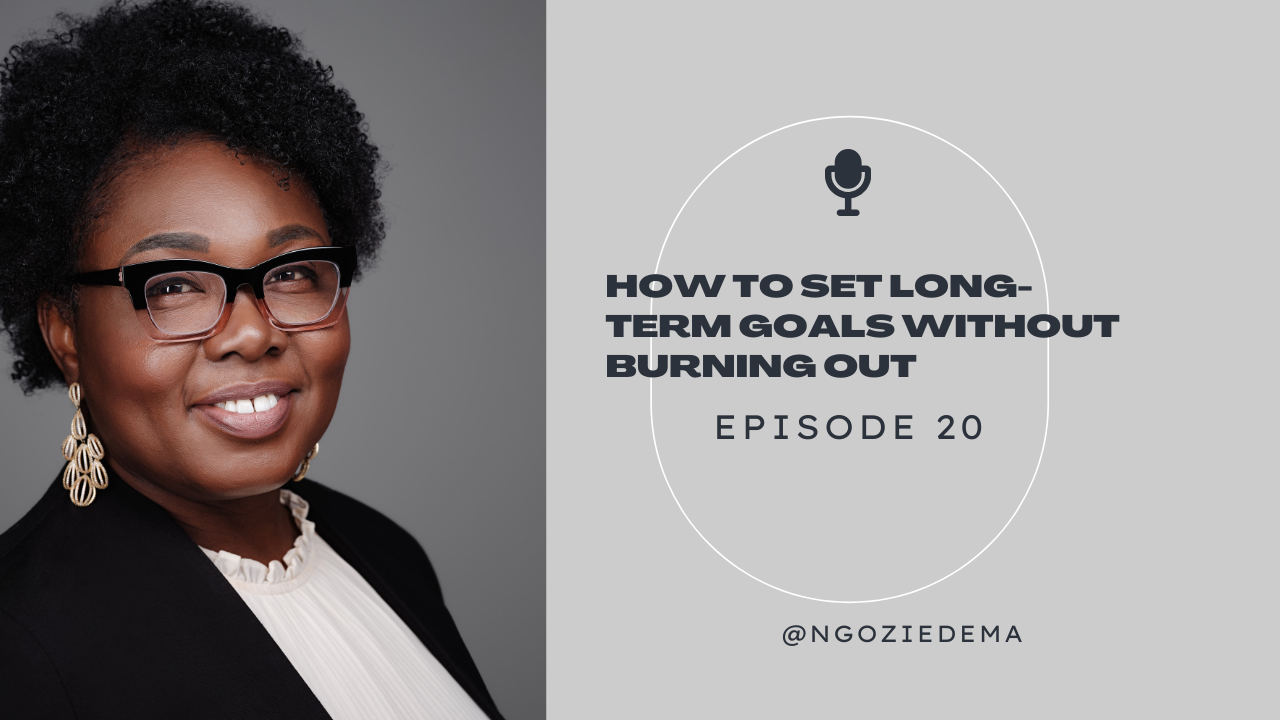How to Set Long-Term Goals Without Burning Out

Why you should set long-term goals?
Setting ambitious goals is commendable. But pursuing them without a clear, manageable plan can lead to exhaustion—and trust me, I have been there. Burnout is not a badge of honor, and I never want to be in that space again. I wish the same for you too.
The secret? Setting long-term goals and working toward them gradually, in a way that honors your mental and physical well-being.
The Truth About Ambitious Goals
Trying to reach your biggest goals within a year is absolutely doable—but only if you pace yourself. The key is building structure in your life that fits you. Not everyone operates the same way, so your structure should match your energy, lifestyle, and capacity.
Here’s what’s worked for:
1. Set Clear, Specific Goals—But Make Them Yours
You've probably heard of SMART goals—Specific, Measurable, Achievable, Relevant, and Time-bound. I have used them often with great success. But I have also seen the flip side: goals so ambitious they lead to burnout, or so safe they do not spark growth.
For example, when I started this podcast in January, my goal was one episode a week. But in March and April, I decided to try two episodes a week, just to see if I could do it without sacrificing my health or quality. I am testing, reflecting, and adjusting as I go.
That is strength, not failure. The point is:
1. Set your goals
2. Track your progress
3. Make adjustments if needed
2. Visualize Your Success
Visualization is powerful. Olympic swimmer Michael Phelps used it to mentally rehearse races, stroke by stroke. By the time he hit the water, his mind had already been there.
You can use the same tool:
- Envision the outcome. Picture where you will be in 12 months. What will you feel? What will you see?
- Create a vision board. Add images, quotes, and goals. Put it where you will see it daily.
- Use your senses. If you are an author, imagine the feel of your book in your hands. If you are an entrepreneur, hear the cheers from happy clients.
Mental rehearsal boosts real-life execution.
3. Use Time Blocking to Protect Your Energy
Time blocking helps you design your day with intention. Instead of reacting to everything that pops up, you create space for deep focus and rest.
To help you get started, I have put together a free Time Blocking Guide with simple templates and practical tips to help you build a schedule that actually works.
Why You Need to Set Long-Term Goals
1. More Room, Less Overwhelm:
Planning for the long term gives you flexibility to breathe and solve problems as they come. Things look good on paper until life happens—but when you allow wiggle room, you can stay consistent and avoid burnout.
2. Motivation That Lasts:
Big goals create excitement. They keep you going even on hard days. It’s like a road trip: we once drove from Calgary to Vancouver, with Moraine Lake as our first stop. That beautiful moment fueled us for the long journey ahead.
Like your stops, during a long trip, plan and celebrate your milestones—they make the trip worthwhile.
3. Better Time Management:
Long-term goals help you break tasks into bite-sized pieces. No more stuffing your schedule or feeling behind. Instead, you focus on what matters, one step at a time.
Watch Out for These Pitfalls
A Quick Exercise For You
Let’s make it real:
- Pick an area of focus. Life, business, health—your choice.
- Write a SMART goal. Make it clear and achievable.
- Break it into tasks. List action steps and set a timeline.
- Think ahead. What might get in your way? How will you handle it?
By the end of this, you’ll have a real plan—and that’s a powerful place to be.
Final Thoughts
Setting long-term goals isn’t just about the finish line—it’s about how you get there. With clarity, consistency, and compassion for yourself, you can pursue your dreams without sacrificing your well-being. In conclusion,
Here are key takeaways:
1. Pursuing ambitious goals should not lead to burnout.
2. Setting long-term goals allows for better time management.
3. The SMART method helps in defining clear objectives.
4. Visualization can enhance performance and confidence.
5. Time blocking is an effective strategy for productivity.
6. Celebrate milestones to maintain motivation.
7. Regularly review and adjust your goals as needed.
8. Engage all senses when visualizing your success.
9. Avoid setting too many goals at once to prevent overwhelm.
10.Defining clear goals enhances overall fulfillment.
You can either tune in above or watch on Youtube by clicking image below:
To get you started with time blocking, grab your guide below:
https://timeblockingmasterytakecontrolofyourtimeandgetmoredone-mc0.plannerpack.co
Join my newsletter for a weekly doze of motivation to help you reclaim time to do the things that matter:
https://mailchi.mp/ngoziedema.com/personal-time-audit-discover-hidden-time-wasters-and-reclaim-your-day
You will find the best stuff on the blog! Check out the following:
Like this post? Share it!
Fresh-squeezed how-to tips on book writing and busy mom life delivered to your inbox weekly.
My mama taught me never to brag. But permit me just this once to brag. Our emails kind of rock. This is where all the magic happens. Sign up for regular pep talks, inspiration, and all kinds of substance-packed goodness. Let's connect before you say goodbye.



